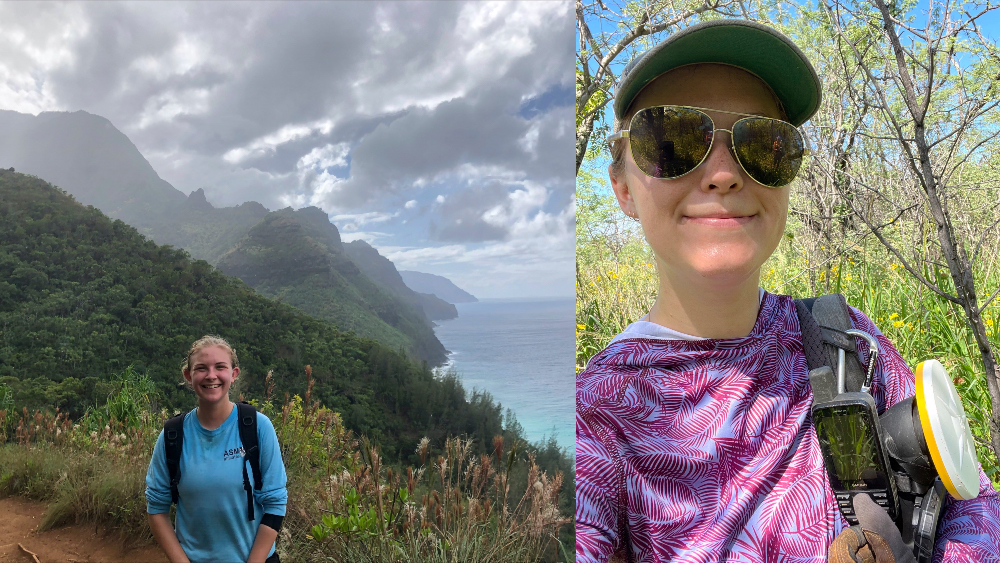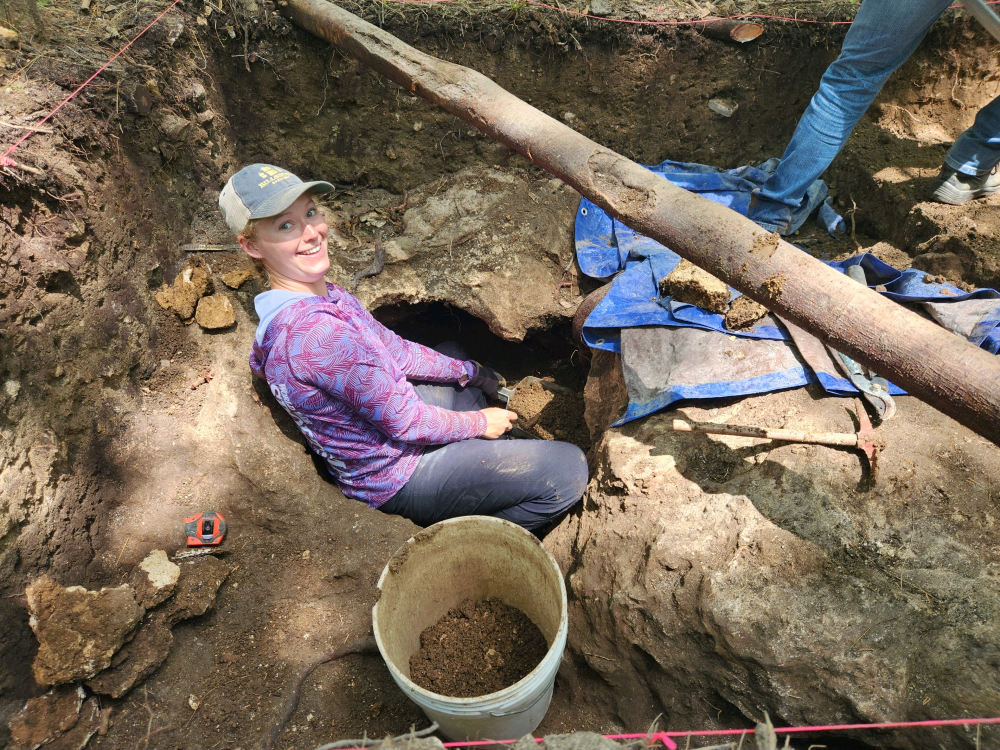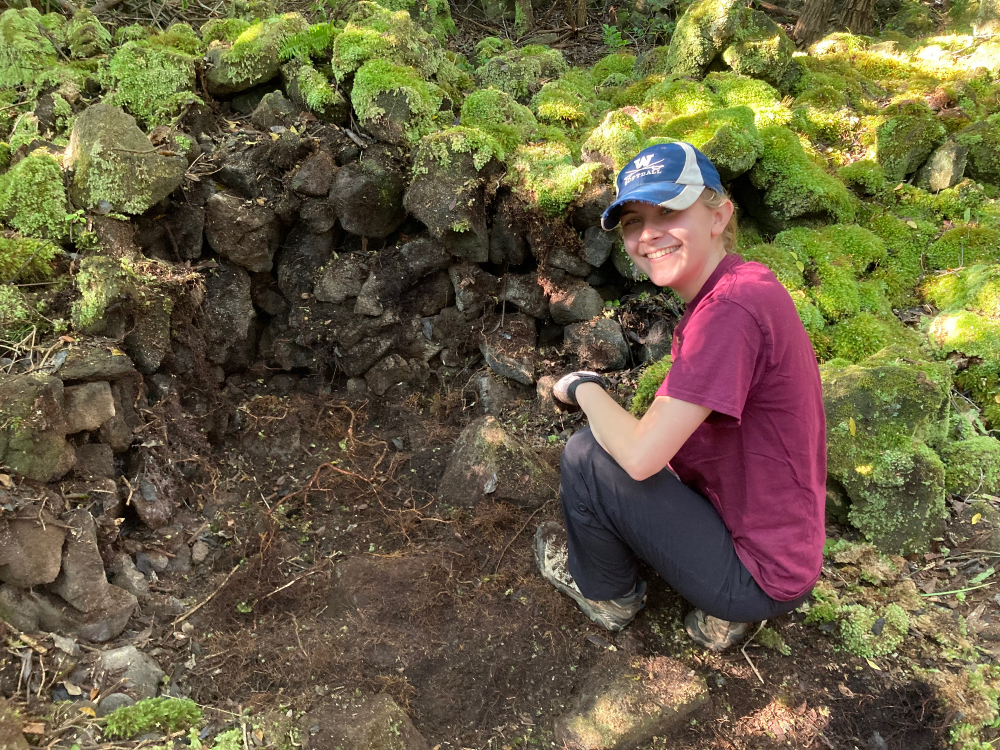Recent William & Mary Anthropology Graduates Thrive in New CRM Careers

Carol Oordt and Mary Lawrence Young are recent alumni of William & Mary’s Anthropology Department, where they obtained both their bachelor’s and master’s degrees. They are the first ever cohort of One-Year M.A. students in the department, graduating in 2022. Soon afterwards, they successfully transitioned into Cultural Resource Management jobs and are now Staff Archaeologists for ASM Affiliates, a firm operating in Hawaiʻi as well as other locations in the United States. Other former members of the William & Mary Anthropology Department are also prominent in this firm, notably Nick Belluzzo, Director of ASM Affiliates’ Honolulu Office, and Dr. Summer Moore, a Senior Archaeologist for the firm also operating in Hawaiʻi. In this article, Tomos Evans discusses with Carol and Mary Lawrence some of their experiences as undergraduate and master’s students at William & Mary, the transition into CRM, exciting recent projects they’ve been involved in as part of their new jobs, and any advice they might have for current or prospective students interested in pursuing similar careers.
Congratulations to the both of you for achieving these positions! To begin with, I am interested in learning more about your time at William & Mary, and how it shaped your trajectories as archaeologists. What did you major and minor in? And what was it during your studies here that most excited you: were there any standout classes, seminars, or other experiences that helped inspire you, and drive your interest in pursuing careers in archaeology?
Carol: During undergrad at William & Mary, I majored in Anthropology and also received a minor in classical studies.
The classes that really excited me often involved the hands-on aspects of archaeology, and I really enjoyed my field school conducted through Colonial Williamsburg and Professor Jenny Kahn's archaeological methods class. Additionally, in general, working With Professor Kahn encouraged me to pursue archaeology in the Pacific, which is how I have come to work in Hawaiʻi.
Mary Lawrence: I double majored in Anthropology and Environmental Science. One of the most influential opportunities I had at William & Mary was getting involved in Dr. Martin Gallivan’s Chesapeake Archaeology Lab as a freshman which allowed me to carry out extensive independent research throughout my studies. Funding from the Environmental Science department also afforded me the opportunity to conduct research measuring oyster shells, later the basis of my honors thesis. I presented a poster on this topic at William & Mary’s Undergraduate Research Symposium, and would later present it at the 2019 Society of Virginia Archaeology Conference where it won the “Best Student Poster” award, and was published in their quarterly bulletin.
Another standout experience was my work at James Monroe’s Highland under Dr. Sara Bon Harper following graduation from undergrad, where I learned a great deal about excavation technique and engagement in public archaeology. I have always enjoyed community education and outreach, making one of my favorite parts of working at Highland being the visitor engagement we part took in as we worked. Lastly, having the opportunity to join Dr. Jessi Jenkins, Dr. Gallivan and the rest of the CAL Lab at the Middle Atlantic Archaeological Conference in 2022 was highly valuable. I presented my first conference paper here, and won the graduate student paper award. Having the opportunity to support my fellow lab-mates and be supported in return during the conference was one of the highlight experiences of my final year at William & Mary.

I’m curious to hear about how you found the transition to working in CRM, so soon after completing your degrees at William & Mary. What were the topics of your master’s dissertations, and in what ways did this research help equip you for your work?
Carol: My master's thesis utilized experimental archaeology, use-wear analysis, and microfossil analysis to examine how shell tools were used in the Society Islands, French Polynesia. While my MA research was fairly specialized, I think being able to create a research design and implement it has been beneficial for conducting projects in CRM. Being able to conduct research and articulate it through writing and verbal means is very important in CRM. These skills, which I developed through my research, have allowed me to perform various jobs with CRM, including report writing, fieldwork, GIS, etc., rather than only being assigned to a specific type of work. I really enjoy having variety in the kind of work I do.
Mary Lawrence: My master’s thesis analyzed the vulnerability of shell midden sites on the Nansemond River in Suffolk, Virginia to the threats of climate change and other environmental processes. To do so, I developed a coastal vulnerability index derived from nine different attributes, both historical and environmental, generating a numerical ranking of site vulnerability. The nine attributes included distance to the nearest shoreline, historic rate of erosion, coastal slope, elevation, land use, geomorphology, site area, historical references, and eligibility for the national register of historic places. The analysis carried out for several of the attributes required the use of GIS software. Improving my understanding of GIS through the analysis required of my master’s thesis has been one of the greatest ways I believe my research has helped equip me for working in CRM. While my work thus far has been primarily in the field, I was able to put my GIS skills to use when I spent a few weeks in the office georeferencing historic maps, as well as maps from old site reports that we have been actively utilizing to relocate and identify previously recorded sites within the project area.
What other useful skills and knowledge did you acquire during your studies that you feel were useful in preparing you for your current CRM work?
Carol: I think the most useful skill I developed during my time at William & Mary was the ability to write and conduct research in a manner that meets the appropriate deadlines. I didn't originally realize how much writing I would be doing in CRM, at least not in the early part of my career. However, I have found the ability to conduct background research, concisely summarize that research, and eventually draw conclusions is very beneficial to my success in CRM. Additionally, CRM often requires quick turnarounds on projects and reports, and in many ways, class and school deadlines prepared me for this. Additionally, knowing GIS is extremely helpful as I spend a lot of time creating various maps for reports.
Mary Lawrence: One of the most useful pieces of knowledge I gained was how to effectively develop an annotated bibliography when writing and collecting background information. Additionally, working in Dr. Gallivan’s lab for five years helped me develop a strong foundation in artifact analysis. Finally, during my time at William & Mary, writing two theses, a conference paper and several seminar essays developed a strong writing foundation which has set me up for success in report writing within a CRM project.

What novel skills have you picked up while adapting to your new positions?
Mary Lawrence: Many of the skills I have picked up so far revolve around being in the field. For one, my general comfort level for surveying and traversing challenging terrains has increased. Additionally, my mapping skills have improved. The project I am currently working on requires a vast amount of mapping in very short periods of time. Therefore, my aptitude for hand mapping has grown since the beginning of the project. A map that at the start would have taken my crew mates and I at least a few days, but we are now capable of producing such maps in significantly less time. Finally, being able to utilize the GIS skills I developed in the classroom and while working on my Master’s thesis gave me a good foundation to build from when learning new methods required within the scope of the project and the demand of GIS needs for archaeological report writing.
Carol: While working in CRM, I have definitely learned more about heritage management in general. Hawai'i has stricter cultural preservation laws as compared to many places elsewhere in the US, and learning how these systems work and the role of archaeology outside academia has been essential for the job. Additionally, I have recently been working on more projects involving consulting with the community, an opportunity I didn't personally have during my MA research. As a result, I have had to quickly learn about interviewing people concerning their histories, cultures, experiences, and beliefs. This opportunity to talk with community members is incredibly valuable, and while the consultation is not always easy, especially when community members oppose the project you are working on, I think elevating the community's perspective concerning the impact of certain projects is important, especially within CRM where community perspectives are often not the main concern.
What does your typical workday consist of? Any particularly exciting projects that you’ve been involved with recently?
Mary Lawrence: Currently, I am part of an archaeology crew working on a large-scale survey in the Makena-Wailea area in South Maui. My typical day begins meeting my crew mates at the survey site around 7:00 am. We are in phase three of the project, which means we have finished the initial survey of the landscape and are now returning to the sites we identified while walking transects as well as the sites previously recorded on other projects in the area. In teams of two, we visit our assigned sites for the day and clear the landscape of any grasses and branches to better access the archaeological sites present. For all sites, we take formal photos with a scale and north arrow and complete paperwork describing the site. For larger habitational sites we often map the area using a baseline and measuring tapes. We break for lunch around noon then continue with site identification, clearing, photographing, and mapping after lunch. The day typically ends around 3pm when we all head home. Days can be long and tiring at times; however, the areas we visit have produced several incredible archaeological finds. Following the end of site reidentification we will begin the process of report writing and drafting.
Carol: The workday varies a lot depending on what projects are going on. I spend a lot of time in the office working on reports for various projects, including archaeological surveys, monitoring, etc. However, some days I monitor construction projects or help with data recovery projects that are going on. The best projects are definitely the ones located on other islands, as they provide opportunities to see different places.
Do you have any advice for current or prospective students interested in pursuing careers in CRM? Is there anything you wish you’d known earlier?
Carol: I would recommend that people entering into the CRM learn as much about the industry as possible, especially by taking some time to talk to people who currently work in CRM. During school, I had a vague idea about the CRM world; however, the work is quite a bit different than I thought. For example, I didn't realize I would spend so much time on construction sites. I think it's easy to get excited about archaeology and historic preservation and forget about some of CRM's less exciting but equally important aspects. The job will differ based on your role and where you work, but I think it's very valuable to learn about the industry prior to taking a position in CRM to help you to have realistic expectations.
Mary Lawrence: It’s worth looking at a few temporary positions throughout the country when first getting started because archaeology can look very different from state to state. I believe having the chance to experience archaeology in other places can help a recent graduate better determine a potential area of focus/specialization for the future. Working on several different projects also gives you the opportunity to work with and learn from a variety of different archaeologists and expand your knowledge of field techniques. Additionally, many temporary project archaeologist jobs come with provided housing near the project area and per diem, making it easier to move from project to project. I would also recommend building a strong network of contacts and keeping in touch with them following the end of a project. One thing I wish I had known earlier was how much diversity in types of work existed within the world of CRM. Prior to graduation, I had only been exposed to Phase III full-scale excavations. However, once starting to work for a CRM company I learned all about the different types of projects a company can have from excavations and archaeological surveys to architectural analyses and construction monitoring.
Thank you both, and best of luck to you in your future pursuits!














